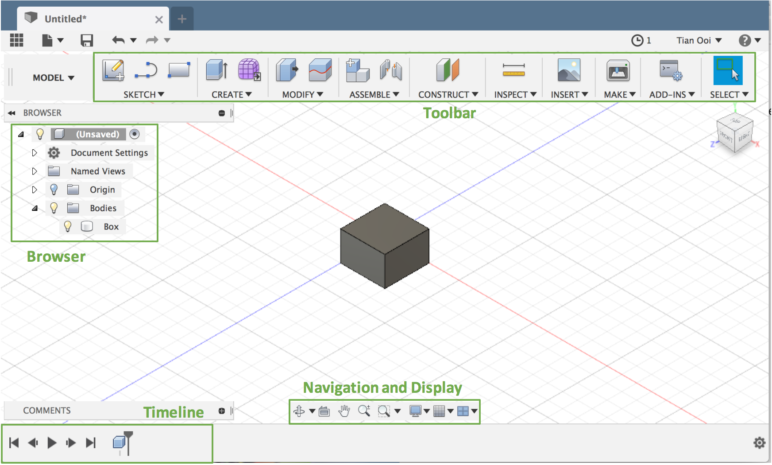
The next steps of the process are only important if you use home printers. For example, if your model is not watertight and contains holes in its surface, Print Studio’s repair tool will fix this for you. The first thing you might want to try is the repair tool, which will automatically detect problems and fix them for you. Preparing the 3D Print with Autodesk Print StudioĪutodesk Print Studio takes you through the 3D printing process step by step.

The following video tutorial by Autodesk’s Fusion 360 evangelist Sachlene Singh gives a good overview of the different options.Ħ. Importing and Exporting STL Filesįusion 360 offers several ways to export, but also import STL files. To learn more about preparing your 3D print with Autodesk Print Studio, read on from chapter 6. If you go for the latter option, the selected body will be exported from Fusion 360 and imported to a newly opened Autodesk print studio window.įor some more info about importing and exporting STL files in Fusion 360, read the next chapter. You can either export it as an STL file (the most popular 3D printing file format) or continue with Autodesk’s print studio to prepare this model for the 3D printer. File Type of 3D PrintĪt the bottom of the settings window, you can decide upon the “ output” of your 3D print. This resolution will guarantee a print of the highest possible detail while ensuring that the data won’t be too big. We recommend a deviation of 0.01 millimeters for 3D printing with i.materialise. A resolution that is too high will make the file very – or even too heavy – to handle.īesides the pre-defined resolution options of “low, medium or high”, you can click on “ Refinement Options” to customize the settings. A very low resolution will make the print look somewhat pixelated. These are mainly about the resolution of your 3D print. On the right-hand side of your screen, you will see a window with additional 3D printing settings to choose from. Once selected, you will see the body is previewed as a mesh.

Now select the body that you intend to print by clicking on it. Now that your design is ready for 3D printing, select the MAKE command.

You simply cannot print an object that has a ‘paper-thin’ wall without substance. Therefore, when turning a 3D model into a real 3D print, the wall thickness or volume information of the model is needed.
Fusion 360 tutorials how to#
We will learn how to model, edit, prepare and 3D print a Fusion 360 design.

It combines powerful functionalities with a beginner-friendly interface and a relatively easy learning curve. In this tutorial, we will dive deeper into the 3D printing capabilities of Fusion 360. Autodesk Fusion 360 is one of the most popular programs among the 3D printing community, especially for those interested in industrial design.


 0 kommentar(er)
0 kommentar(er)
